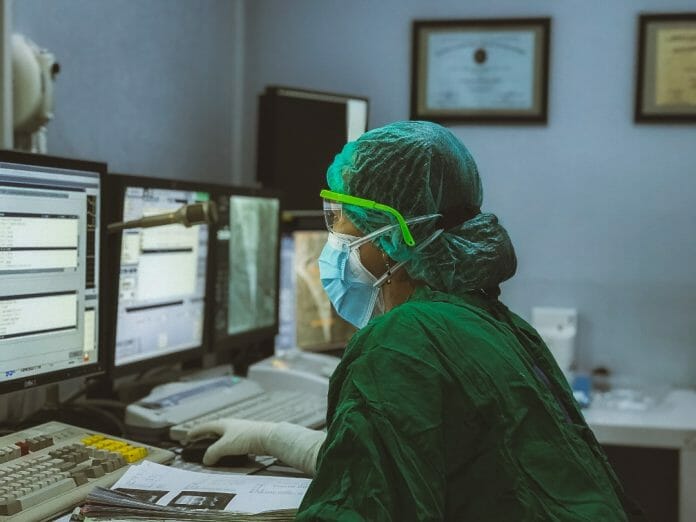By Dr. Mohd Farhan Bin Hamdan, Consultant General and MSK Radiologist from ALTY Orthopaedic Hospital
Medical imaging is crucial in the healthcare industry for radiologists and other professionals to assess and document the course of a disease, or response to medical treatment by generating visual illustrations through imaging techniques.
There are several types of medical imaging technologies available in the industry, and each provides different information or diagnosis depending on the needs for investigation. For example, in an orthopaedic setting the imaging technologies used can detect and evaluate any injuries or abnormalities in the bones, joints, spine, or muscles, which helps an orthopaedic surgeon to determine the best treatment for the conditions.
When it comes to advancements in imaging equipment, Malaysia is no stranger, being home to some of the most advanced imaging technologies in the region across medical specialties including cardiology, gynaecology, oncology and orthopaedics. This puts the country in a unique position to become a leading global healthcare destination for patients in the country and beyond, enabling us to offer quality care at affordable pricing.
Technology has tremendously revolutionised in the radiology industry, and healthcare professionals in the country have access to better treatment options to improve patients’ quality of life.
In the past, the earliest form X-rays, or what radiologists call “plane films” were used to detect bone fractures and diagnose chest infections, reading films through a wet developer process in a dark room. Today, most medical imaging technology is equipped with Artificial Intelligence (AI) and Machine Learning (ML), bringing promising innovation to healthcare. Doctors are able to get fast and accurate data, and provide a comprehensive report of a patient’s health in real time, making faster decisions and saving lives.
The boom in imaging technology can provide a new dimension for Malaysia’s healthcare framework, especially combined with the rise of super specialty hospitals in the country that focus on niche areas. For super speciality hospital set-ups, diagnostics play a critical role as patients visit these hospitals with the assurance of receiving a healthcare solution that is catered to their condition.
For instance, ALTY Orthopaedics Hospital super specialises in managing conditions of the joints, spines and other musculoskeletal conditions. To provide support to our patients and to improve their quality of life, we have been investing steadily in advanced imaging technologies that are transformative in a patient’s journey to wellness and many of which are being introduced in Malaysia for the very first time. These include technologies such as:
- EOS Imaging System (X-ray)
The EOS Imaging System is the first orthopaedic medical imaging equipment available in Malaysia. Unlike X-ray and CT Scan (Computed Tomography), EOS has a lower radiation exposure. It is a low-dose, x-ray technology that can capture a full body image – front and side view of the skeletal system, regardless if the patient is in a standing or sitting position. This is a recommended imaging technique especially for patients with scoliosis that usually requires multiple screenings and recurrent exposure to radiations. The two dimensional (2D) and three-dimensional (3D) orthopaedic images from EOS can assist doctors with a more accurate diagnosis and approach for treatment, as well as monitor the progress of the treatment.
- Open Tilting MRI
Malaysia’s first-ever weight-bearing MRI, also known as the tilting MRI that allows a patient to be positioned in a supine (lying down) or weight-bearing (standing up) position, as the device can rotate a patient from 0 to almost 90 degrees. The outcome from this is more precise for doctors to study all joints and the spine. For example, when a patient is suffering from joint pain, a traditional MRI imaging (usually when a patient lays downs) could not detect the pressure on the joints as is significantly decreased in that position. However, when a patient is in a natural stand-up position, the compression and pressure cause by the force of the body weight reveals the symptoms and disorders more clearly. Open MRI also reduce the risk of panic attacks and patients who are claustrophobic.
- Bone Densitometry Machine
This is a quick, non-invasive low dose radiation method in measuring bone mineral density (BMD). It can detect osteoporosis whereby bone density is significantly reduced with the resultant increased risk of fracture even with low energy injury. Aging is the most common risk factor for osteoporosis, and a study found that the prevalence of Osteoporosis is 14.0% in a healthy urban Malaysian population. The machine has a high-resolution ceramic digital detectors array that provide better bone mapping and images for doctors and patients to have a complete fracture risk assessment.
Hospital, clinics and super speciality treatment centres that have been investing in advanced imaging technologies will not only develop a reputation for providing niche care but also provide readily available advanced medical care for Malaysians. This is one of the many factors that attract foreign healthcare travellers, which help to speed the national economy.
As we move to become a leading healthcare destination in the region and globally, imaging will hold a key place in further strengthening Malaysia’s healthcare offerings and improving access to quality care for patients. Advancements in imaging will provide great potential for shorter reporting times, fulfilling urgent patient needs and improving overall healthcare outcomes.









